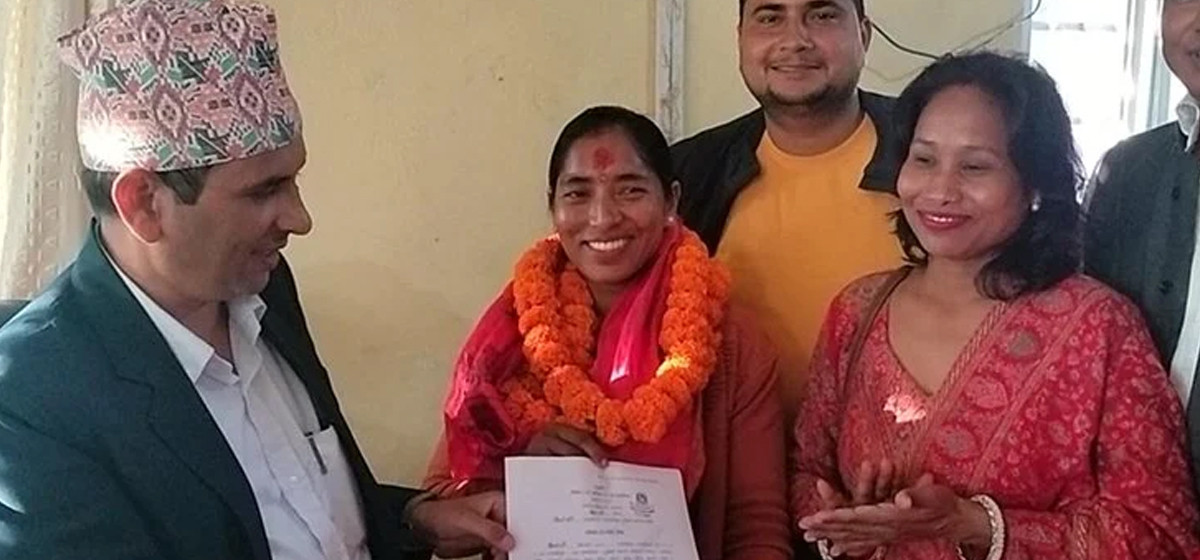In order to emancipate and liberate oursewlves from the caste system, we have to, first and foremost, erase and eliminate it from our minds and remind ourselves that discrimination is an act of sin. But that’s a herculean task as the caste system has been stuck deep in our thoughts for over a millennia.
I would like to begin with two incidents of the recent past in Nepal – one, a love affair between a Dalit boy and an ‘upper cast’ girl, which ended in the death of the boy in Rukum (west), and the other that happened in the capital of the country where a landlady refused to rent a room to a Dalit girl, resulting in a legal battle that landed the landlady in prison. Both the incidents have ignited a debate over cast discrimination as an impediment to social progress and harmony. In this piece of writing, I also try to bring some aspects of it for a healthy debate.
In the Mahabharata, dating from around 2,000 years ago, Bharadwaja, an argumentative interlocutor, responds to the defense of the caste system by Bhrigu (a pillar of the establishment) by asking: “We all seem to be affected by desire, anger, fear, sorrow, worry, hunger, and labor; how do we have caste difference then?” Yukichi Fukuzawa, the founder of Keio University writing on equality in his famous essay “Encouragement of Learning” states that “Heaven does not create persons above other persons, nor does it create persons below other persons.” For over a millennia, the debate over the caste system and social movements against it has been taking place perennially but without any success.
Prior to the industrial revolution, the social condition of the people looked similar everywhere under feudal order of governance. Not exactly the caste system but similar kinds of divisions within social order were visible in every continent - Europe, America, Africa and Asia. In Europe, they call it the ‘class system’ whereas in the Indian sub-continent, it is known as the caste system. In the Hindu ‘Varna system’ there exist four classes or Varnas with the Brahmins or scholars at the top followed by the Kshatriya, the Vaishya and at the bottom, the servants or Sudra.
During the Roman Empire, the social class was clearly divided into a hierarchical order as patricians and plebeians- the patricians as the most powerful privileged ruling class and the lowest in the class order were the plebeians that include the poor, slaves, farmers, women and artisans. It also included the business group. The wealthy families were called the Fabians. In East Asia, particularly in China, society was divided into four groups; the scholars, farmers, artisans, and at the bottom the merchants and traders.
Those found guilty in caste-discrimination cases have never bee...

As the Nepali social fabric and culture is religiously and culturally influenced by the Hindu Varna system, like in the Indian subcontinent with the Indo-Aryan root, it has the characteristics of the Indo-Aryan cultural practice in common.
In Nepal, the first Civil Code of 1910 BS introduced by Prime Minister Junga Bahadur Rana legalized and consolidated the caste system in the Nepali society that degraded the lower strata of society to live as untouchables for generations. This inhuman and unthoughtful act not only degraded human lives but also deprived them of many fundamental rights, marginalizing them in society.
All countries of the East and West are free from this kind of human discrimination, labelled as a scar on the civilized world, and are destined to a new era of progress and prosperity in a synchronized manner, except some countries in South Asia including Nepal, which is still shackled to the remnants of this ancient feudal practice of caste system.
In order to emancipate and liberate oursewlves from the caste system, we have to, first and foremost, erase and eliminate it from our minds and remind ourselves that discrimination is an act of sin. But that’s a herculean task as the caste system has been stuck deep in our thoughts for over a millennia. But anyway, it has to come to an end voluntarily, if not convincingly by the introductions of prohibitory orders and legal instruments.
However, lately, as a result of different social and political movements of the parties and Dalits of their own, the latter have made their voice heard. As a result, the Constitution of Nepal prohibits the practice of prejudice and discrimination based on caste, gender, ethnicity, race and colour. The practice of untouchability based on the caste system has also been made illegal by the law as a punishable offence. With the introduction of this law, if anybody tries or refuses to treat all people equally and behaves differently with a prejudicial mindset, then he or she will be punished for the offence.
Untouchability has its deep-rooted social and economic causes and dimensions, which should be addressed in a similar vein through the application of a positive discrimination approach. In this context, in order to eliminate all kinds of discrimination, Nepal has its obligation to uphold and respect the international conventions and provide equal space for every individual and community their rightful place in society without any biasness. Since Dalits are facing absolute poverty, their rise from the stage of being rags without any external support is almost impossible. A fulcrum to lift them first and place them on the right track prior to seeking their acceleration would be the right approach for uplifting the Dalit society.
As a political means, a decentralized democratic order with inclusivity and equality as the foundation unleashes the shackles of the social hierarchy and treats people equally by allowing people to participate in every aspect of social life - whatever they like to choose. Democracy opens up social and economic opportunities equally to its citizens. Opening up of economic opportunities widens the chances for Dalits to be self-empowered through engagements in different professions. In the social aspect, the state should act as a catalyst by putting additional investment to empower Dalits in the sectors like health and education. Such an affirmative favor from the state may be required for some time until the social indicators are positive and level with other competing groups.
By only unleashing all the potential of the marginalized and Dalits can we realize the national goal of prosperity and happiness. For which we need to remove the major sources of tyranny, according to Professor Amartya Sen. What people can positively achieve is influenced by economic opportunities, political liberties, social powers, and the enabling conditions of good health, education, and the encouragement and cultivation of initiatives. The institutional arrangements for these opportunities are also influenced by the exercise of people’s freedoms, through the liberty to participate in the social choice and in the making of public decisions that impel the progress of these opportunities.
(The writer is a retired Under Secretary of the Ministry of Foreign Affairs.)









-1200x560_20240508161434.jpg)





















